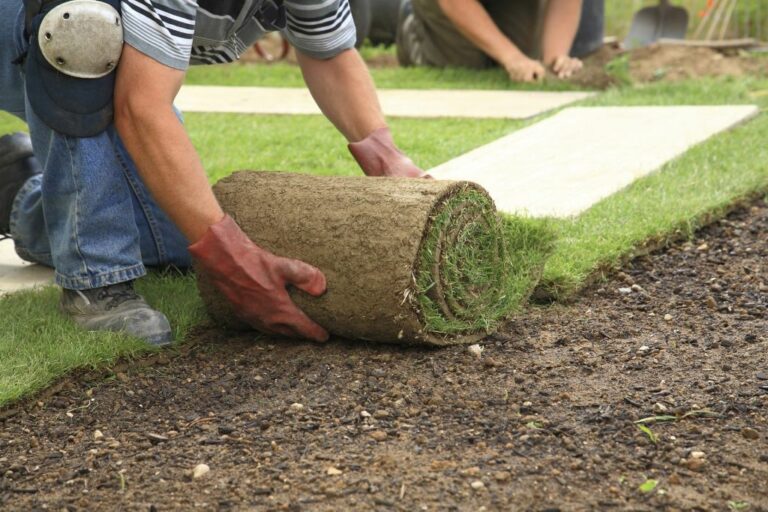
Landscape design is more than just planting a few flowers and shrubs around your yard. It’s an art and a science that involves the application of specific design principles to create outdoor spaces that are both aesthetically pleasing and functional. Whether you’re a homeowner wanting to improve your garden or a professional landscape designer working on larger projects, understanding these core principles will go a long way in shaping a balanced and beautiful outdoor environment. Here are the seven principles of landscape design that everyone should know:
1. Unity
Unity, in its simplest form, is the repetition and consistency of a design. This principle ensures that the various elements used in a landscape, like plants, hardscaping, and décor, fit together cohesively to create a harmonious design. Unity can be achieved through the use of color schemes, textures, and even specific shapes that echo throughout the landscape.
2. Balance
Balance is the principle that deals with arranging elements in a manner that they evenly distribute visual weight across the landscape. There are two types of balance:
- Symmetrical Balance: The left and right halves of the landscape are mirror images of each other.
- Asymmetrical Balance: Different elements on each side of the landscape achieve a sense of balance without necessarily being identical.
3. Contrast and Harmony
Contrast and harmony work hand-in-hand to make a landscape visually interesting while also pleasing to the eye. Contrast can be established through the use of colors, forms, or textures that are different but still appealing when combined. Harmony, on the other hand, is achieved when the elements in a landscape complement each other and work well together, creating a sense of peace and order.
4. Color
Color is perhaps one of the most obvious elements of design and has a profound impact on how a landscape is perceived. It’s not just about choosing beautiful colors; it’s also about understanding how different colors interact and influence mood. For example, warm colors like red, orange, and yellow evoke feelings of warmth and energy, while cool colors like blue, green, and violet are more calming.
5. Transition
Transition refers to the gradual change of elements in the landscape. It can be achieved through the manipulation of plant sizes, color gradients, or the transition from hardscape to softscape elements. This principle helps in guiding the eye through the landscape and can make a garden seem more dynamic and engaging.
6. Proportion
Proportion deals with the size of elements in relation to each other and to the landscape as a whole. Getting the proportion right is crucial because disproportionate elements can make a landscape feel cluttered or incomplete. This principle isn’t just limited to plants; it also applies to features like fountains, pergolas, and other hardscapes.
7. Focal Point
Every well-designed landscape has one or more focal points that capture attention. Focal points can be anything from a beautiful tree or a statue to a stunning flower bed or water feature. The key is to make the focal point stand out while still fitting seamlessly into the overall design.
The Interplay of Principles
Understanding these seven principles individually is crucial, but their real power lies in how they interact. For example, a well-chosen focal point can add a sense of unity to a landscape while also providing contrast and interest. A well-planned transition can enhance balance and proportion, guiding the viewer’s eye smoothly from one area of the garden to another.
Our Landscaping Company Recommendations
Welcome to Deatons Turf Management, the premier provider of comprehensive landscaping services in Mt Holly, NC. With a strong focus on both aesthetics and functionality, our team is well-versed in the art and science of landscape design. From lawn maintenance and garden installations to irrigation solutions and hardscaping projects, we bring years of expertise to deliver results that not only meet but exceed our clients’ expectations. Utilizing the latest equipment and adhering to the principles of landscape design, we create outdoor spaces that are visually stunning, easy to maintain, and tailored to fit the unique needs and lifestyles of our clients.
Located in the picturesque town of Mt Holly, North Carolina, Deatons Turf Management is a community-oriented business that takes great pride in contributing to the beauty and well-being of our local neighborhoods. Our commitment to quality, customer service, and sustainable practices has solidified our reputation as a reliable and responsible landscaping partner. We offer personalized solutions that combine creativity with practicality, ensuring that your outdoor spaces are not only beautiful but also functional and sustainable. Trust Deatons Turf Management to bring your landscaping dreams to life. Reach out to us at (704) 919–6102 or visit our website https://deatonturfmanagement.com/
Check out our blog